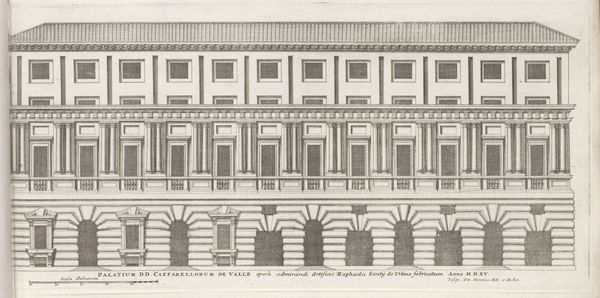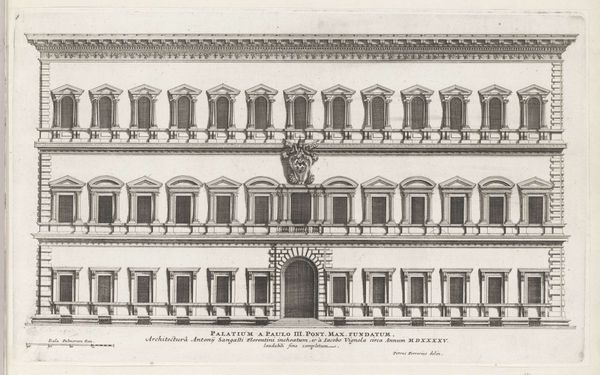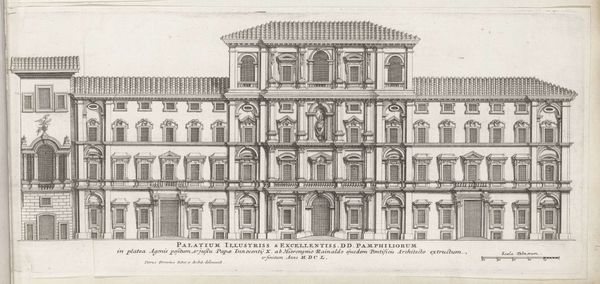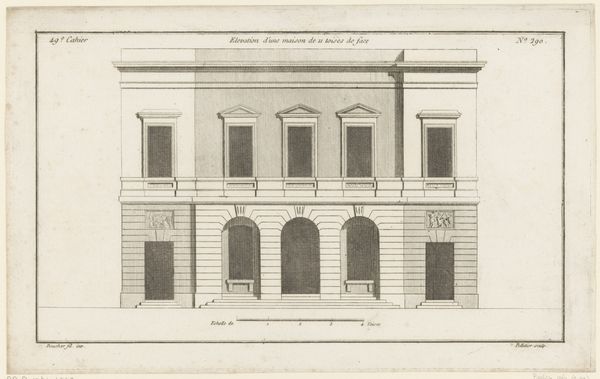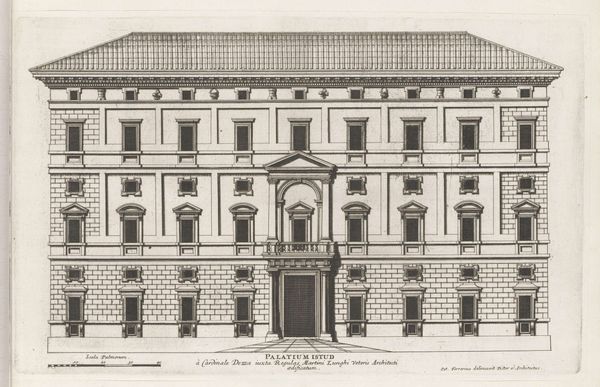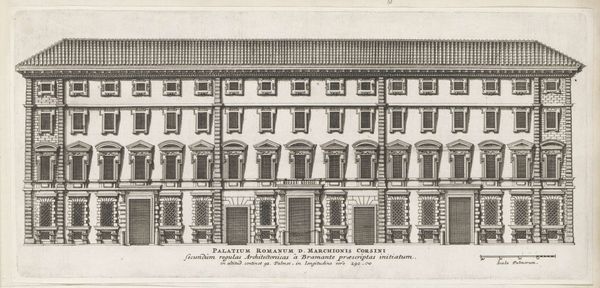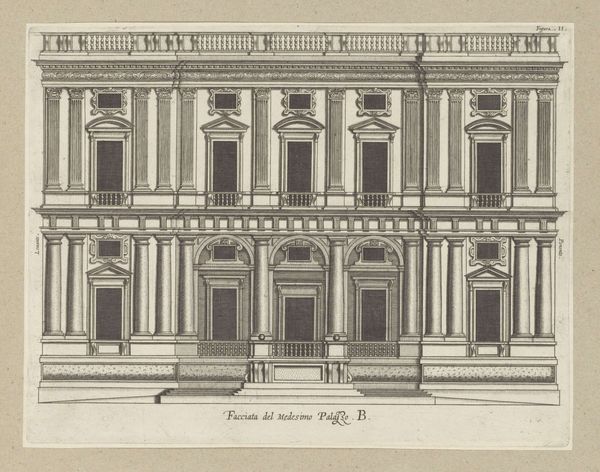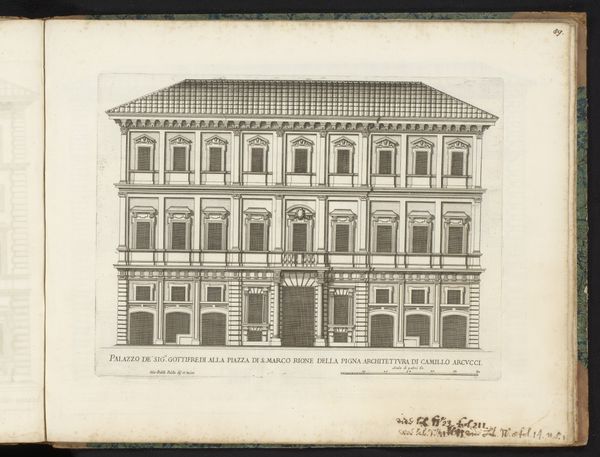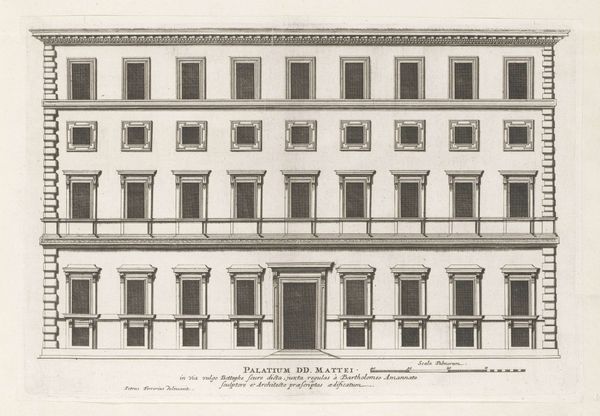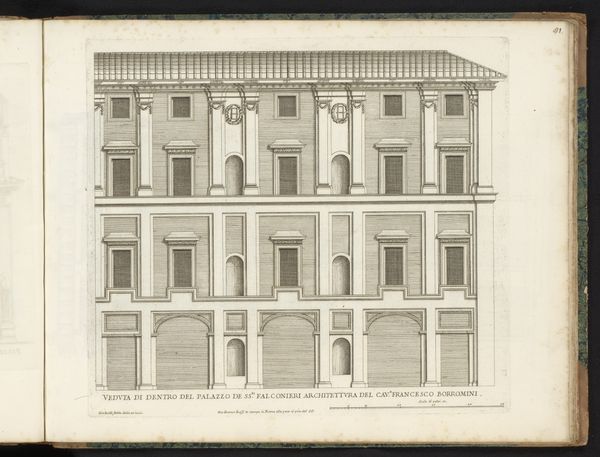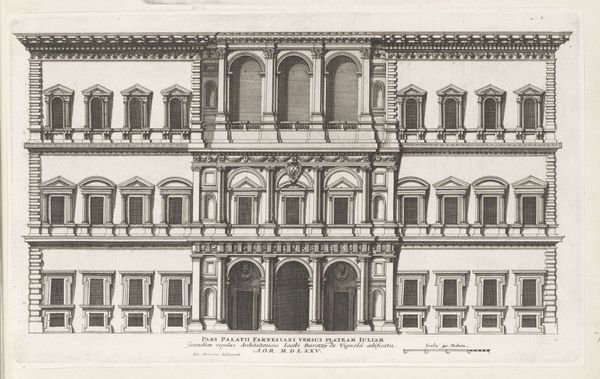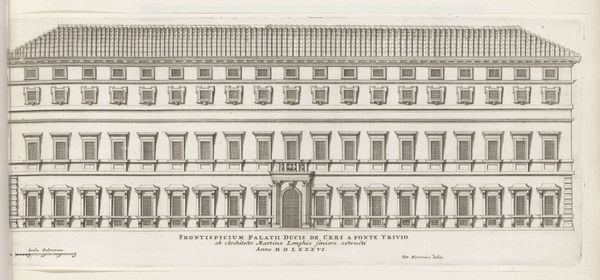
drawing, print, etching, engraving, architecture
#
drawing
#
baroque
# print
#
etching
#
cityscape
#
engraving
#
architecture
Dimensions: height 179 mm, width 415 mm
Copyright: Rijks Museum: Open Domain
Editor: Here we have Giovanni Battista Falda’s "Façade van Palazzo della Cancelleria te Rome" from 1655. It's an engraving and etching showing a very formal building. I find its rigorous symmetry pretty impressive but almost a little…intimidating? What do you see in this piece that might explain its impact? Curator: It's important to consider the Palazzo della Cancelleria not just as architecture, but as a political statement. Falda’s engraving helps to disseminate a very specific image. The Palazzo was and remains the Papal Chancellery, right? This engraving reinforces the power and authority of the papacy in Rome through the visual language of grandeur. What aspects of the image speak to that power for you? Editor: Well, definitely the sheer scale. And the repetition of those rectangular windows, those classical elements... everything is so carefully planned and executed. It projects an image of stability and permanence, which I suppose is what the Church was aiming for? Curator: Precisely! This wasn't just about aesthetics; it was about solidifying the Church's image amidst a period of religious and political upheaval. Prints like these served as promotional material, influencing perceptions of papal authority far beyond Rome. Think about how such a controlled, idealized view might obscure other narratives, less flattering to the papacy. Does it make you question whose story gets told? Editor: Absolutely. It's a reminder that even something seemingly objective, like an architectural rendering, can be a carefully constructed form of propaganda. This piece encourages a critical reading of how institutions use art to shape public perception. Curator: Indeed. And it demonstrates how prints facilitated that shaping, distributing specific messages about power and control throughout Europe. Something to always consider with art intended for public viewing. Editor: This definitely adds layers to how I appreciate architectural prints! It's more than just the artistry; it’s the social and political narrative being carefully constructed. Thanks for helping me to contextualize Falda's engraving.
Comments
No comments
Be the first to comment and join the conversation on the ultimate creative platform.
